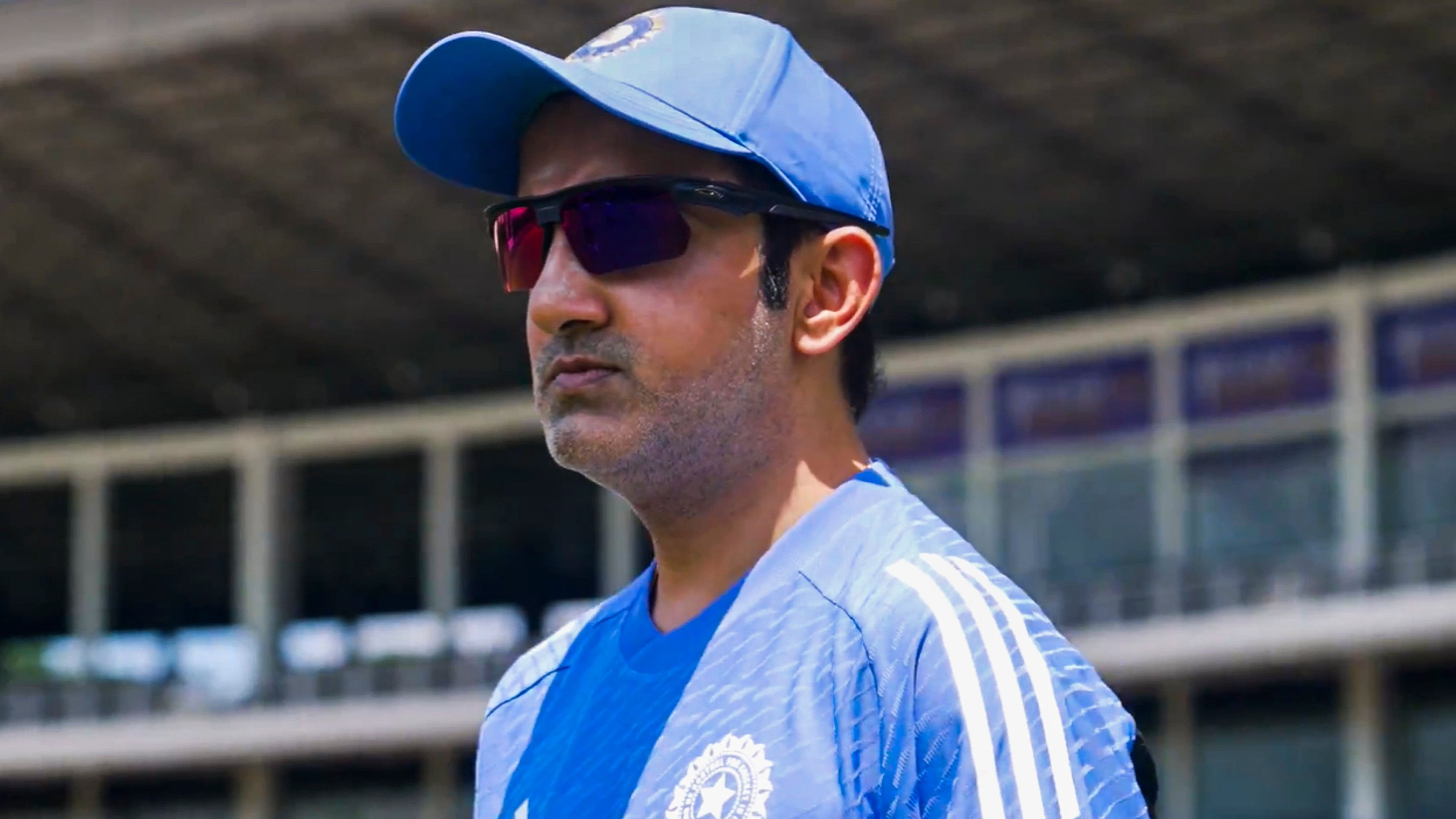
Gautam Gambhir has three high-profile campaigns in the first year of his tenure as Indian cricket team's head coach.
Credit: PTI Photo
Bengaluru: When Gautam Gambhir’s name was first floated as a potential candidate to replace Rahul Dravid as the Indian cricket team’s head coach, the overwhelming reaction was “You can’t be serious!” After all, perception often takes precedence over actual personality. The person behind the persona, however, weighed heavy and Gambhir was handed the job, thus ending one of Indian cricket’s most open kept secrets.
During his playing days, Gambhir was a feisty batter and a fierce competitor, never shy of a confrontation. Post his playing days, little seems to have changed. If anything, he presents the same of the more in a nuanced fashion now.
Gambhir has inherited a vibrant squad across the three formats from Dravid, with the T20 team in transition following the retirements of three stalwarts -- Rohit Sharma, Virat Kohli and Ravindra Jadeja.
If ensuring a seamless transition is a big enough challenge in itself, the 42-year-old has three high-profile assignments coming up, starting with the tour of Australia for a five-Test series towards the end of this year. India play another set of five Tests in England next summer, immediately after the final of the third cycle of the World Test Championship. Though India haven’t qualified for the Lord’s final yet, they sit on top of the WTC points table. Sandwiched between these two big series is the Champions Trophy in February-March next year, slated to be held in Pakistan.
Gambhir, in the interim, has some not-so-challenging assignments that should help him ease into the job before he takes the team to Australia. His stint began on Saturday with the first of six white-ball matches against Sri Lanka, who have lost eight of their nine white-ball internationals against India since January 2023.
Following this short trip, India will host Bangladesh for two Tests and three One-Day Internationals and New Zealand for three Tests, which won’t be a stroll but shouldn’t be a big task either. The five Tests are good enough for Gambhir to arrive at the right combination for the Australia series.
The on-field challenges, however, can be taken care of if Gambhir manages to get everyone on the same page. Though the Delhiite is just one match into his job, one can already get a sense of the style of his functioning. Gambhir sent out two strong signals even before he stepped on to the ground with the team for the first practice session. He installed Suryakumar Yadav as the T20 captain instead of Hardik Pandya, who would have been the natural successor after having been the deputy to the now-retired Rohit. While the radical move rearranged the hierarchy within the white-ball cricket set-up (Shubman Gill is the vice-captain in T20Is and ODIs now), there was a sound logic behind the shake-up. Notwithstanding his excellent all-round utilities, Hardik carries a delicate body prone to injuries. Harsh as it may seem on the Baroda player, it made good cricketing sense to have Suryakumar, whose presence on the park is more reliable, at the helm of affairs.
Suryakumar’s elevation also makes Rohit’s continuation as ODI skipper acceptable. When Kohli wanted to stay on as the ODI captain after handing the T20 reigns to Rohit, he wasn’t extended the same courtesy by the BCCI. The reason being, it made more sense to have one captain for the two white-ball formats. Again, this decision was steeped in logic as Kohli and Rohit played all three formats and having two heads for two formats with differing cricketing philosophies could have been a recipe for disaster. In the current situation, Suryakumar isn’t part of the ODI set-up while Rohit is done with T20 internationals. So, the arrangement should work.
Equally telling was his decision to get Kohli and Rohit to turn up for the succeeding ODI series against Sri Lanka. We have seen in the past the two senior-most batters in the team often skipping matches of less significance and returning only for the marquee clashes. Not under Gambhir’s watch. The new coach wants the duo to be playing all ODIs and Tests, if they are fit, since they no longer play T20Is. Though Gambhir, in his own words, doesn’t mind the two continuing till the 2027 50-over World Cup, the immediate target is the Champions Trophy, which is just seven months away. Their ODI future will depend a lot on how the eight-nation tournament pans out for the team and how their individual performances will be. Should there be adverse results, Gambhir might just tell them, “Thank you for your services.”
Both the aforementioned calls were taken even before he entered the dressing room, where egos have to be massaged, differences have to be sorted out and hurt feelings assuaged. Only time will tell whether Gambhir’s “tough love” approach works or he has to rejig his tactics, but then there is no one method to success. All three of his immediate predecessors -- Anil Kumble, Ravi Shastri and Dravid -- were all different but found great success.
Having played with, captained and/or mentored many of the current generation players, Gambhir already has a rapport with most members of the team. While that’s an advantage in his quest to build synergy between himself and the team, he can just follow Dravid’s advice in a tough situation: “... Exhale, take a step back... Even if it’s difficult for you, crack a smile. Whatever else happens, that will shock people.”
Be prepared to be shocked!